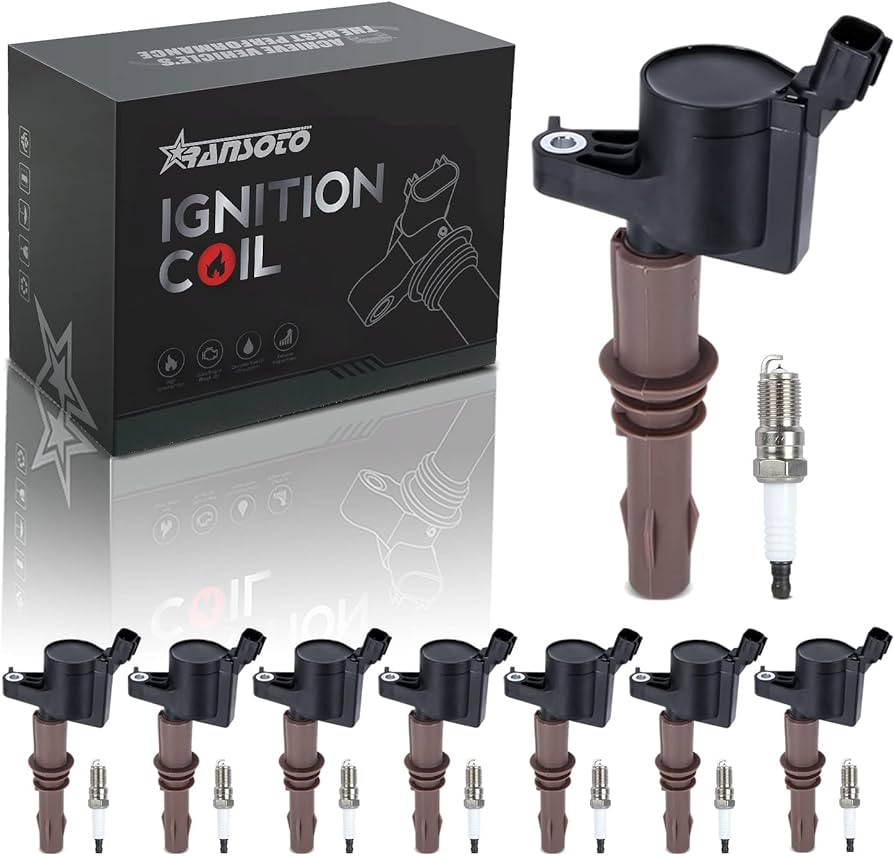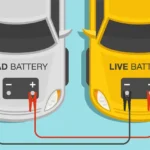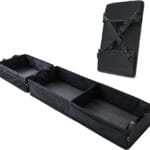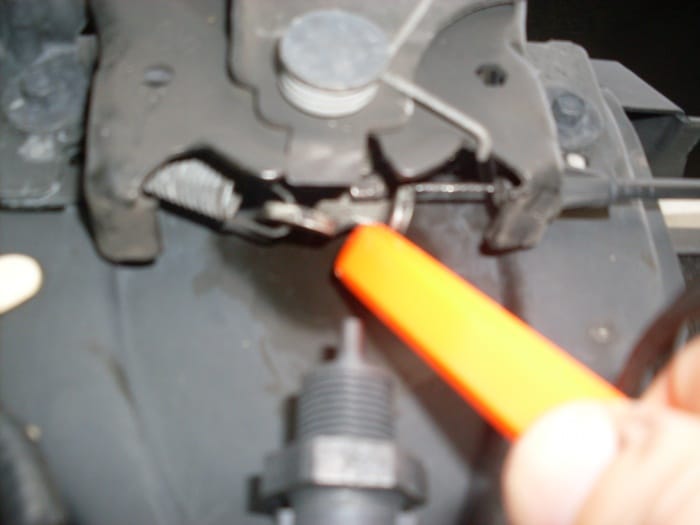What Temp Should a F150 Transmission Be
The optimal temperature for an F150 transmission is between 175 and 200 degrees Fahrenheit. Monitoring the temperature is crucial for maintaining the health and longevity of your F150’s transmission.
Operating at excessively high temperatures can cause damage to the transmission system, leading to reduced performance and potential failure. On the other hand, running the transmission at temperatures that are too low can result in inefficient operation and sluggish shifting.
It is important to ensure that the transmission fluid is at the appropriate temperature range to ensure optimal performance and durability. By keeping the transmission temperature between 175 and 200 degrees Fahrenheit, you can ensure that your F150’s transmission operates at its best.
Understanding F150 Transmission Temperature
When it comes to maintaining the health and longevity of your F150’s transmission, understanding its temperature is crucial. Operating your truck within the optimal temperature range ensures smooth shifting, reduced wear and tear, and improved fuel efficiency. In this article, we will explore the normal operating temperature of an F150 transmission, what temperature is considered too high, and the various factors that can affect transmission temperature.
What Is The Normal Operating Temperature?
The normal operating temperature of an F150 transmission typically ranges between 80 and 93 degrees Celsius. This range ensures that the transmission fluid is at the optimal viscosity, allowing it to flow smoothly through the system and provide effective lubrication. Maintaining the transmission within this temperature range is essential for proper functioning and longevity.
What Temperature Is Too High?
If the transmission temperature exceeds 93 degrees Celsius under regular driving conditions, it is considered too high. Continuous operation at such high temperatures can lead to premature wear of internal components, decreased fluid life, and potential damage to the transmission. It is crucial to be mindful of the temperature and take appropriate measures to prevent overheating.
What Factors Affect Transmission Temperature?
Several factors can influence the temperature of an F150 transmission, including:
- Driving conditions: Heavy towing, driving uphill, extreme weather, and stop-and-go traffic can increase the transmission temperature.
- Transmission load: Carrying heavy loads or towing trailers puts additional strain on the transmission, causing it to generate more heat.
- Transmission cooler efficiency: A faulty or insufficient transmission cooler may not be able to dissipate heat effectively, leading to higher temperatures.
- Fluid condition: Old or contaminated transmission fluid can impair its ability to perform its cooling functions, resulting in elevated temperatures.
- Transmission type: Different transmission models may have varying temperature tolerances.
It is important to monitor your F150’s transmission temperature regularly, especially during demanding driving conditions or when towing heavy loads. Installing an aftermarket transmission cooler or ensuring that the existing cooler is functioning optimally can help keep the temperature within acceptable limits.
Optimal Performance And Temperature
Maintaining an optimal temperature is crucial for the performance of your F150 transmission. While there may be variations depending on the specific model and year, generally, the transmission temperature should stay between 206-215 degrees Fahrenheit. It is important to monitor and address any overheating issues promptly to avoid potential damage.
Why Is Achieving The Optimal Temperature Important?
Ensuring the optimal temperature for your F150 transmission is crucial for its overall performance and longevity. The transmission plays a vital role in transferring power from the engine to the wheels, allowing your vehicle to accelerate smoothly and shift gears effortlessly.
When the transmission operates at the right temperature, it minimizes wear and tear on its internal components, preventing unnecessary damage and potential breakdowns. This leads to improved reliability, reduced maintenance costs, and ultimately, a longer lifespan for your transmission.
Moreover, maintaining the right temperature also maximizes fuel efficiency. When the transmission is too cold, it takes longer to warm up and reach its optimal operating temperature. This increases fuel consumption, leaving you with lower mileage and higher expenses. On the other hand, an overheating transmission can also lead to poor fuel efficiency as it strains the engine and causes it to work harder, burning more fuel in the process.
Benefits Of Maintaining The Right Temperature:
1. Enhanced Performance: By ensuring the optimal temperature, your F150 transmission can function at its peak performance level, delivering smooth and responsive gear shifts. This not only improves your overall driving experience but also promotes safer handling on the road.
2. Extended Lifespan: A transmission that operates within the recommended temperature range experiences less stress and friction, which helps to preserve its internal components and prevent premature wear and tear. This significantly extends the lifespan of your transmission, saving you from costly repairs or replacements down the line.
3. Improved Fuel Efficiency: Maintaining the right temperature for your transmission contributes to better fuel efficiency. When the transmission is at its optimal temperature, it operates efficiently and reduces unnecessary strain on the engine. This results in less fuel consumption, saving you money at the pump.
4. Reliable Performance: When your transmission is operating at its optimal temperature, it minimizes the risk of overheating or freezing, ensuring consistent and reliable performance in various weather conditions. Whether you’re driving in extreme heat or freezing temperatures, maintaining the right temperature guarantees that your transmission will function optimally and reliably.
5. Cost Savings: Overheating or excessively cold transmissions can lead to premature failure and expensive repairs. By maintaining the right temperature, you can avoid these issues and save money in the long run. Additionally, fewer repairs mean less downtime and inconvenience, allowing you to focus on enjoying your F150 without any unexpected setbacks.
Measuring And Monitoring Transmission Temperature
Measuring and monitoring transmission temperature is crucial in ensuring the optimal performance of your F150. It is important to know what temperature a F150 transmission should be operating at to prevent overheating and potential damage. Regularly checking and maintaining the transmission temperature within the recommended range is essential for the longevity of your vehicle.
How To Measure Transmission Temperature
Measuring the temperature of your F150 transmission is crucial for ensuring its optimal performance and longevity. Luckily, determining the temperature of your transmission is a straightforward process. Here are the steps to measure the transmission temperature:
- Start by parking your F150 on a level surface and engaging the emergency brake.
- Locate the transmission dipstick, which is typically labeled and positioned near the back of the engine compartment.
- Next, ensure that the transmission fluid is warmed up by driving the vehicle for at least 10-15 minutes.
- Turn off the engine and carefully remove the dipstick from the transmission fluid reservoir.
- Wipe the dipstick clean with a lint-free cloth or paper towel.
- Reinsert the dipstick fully into the reservoir, ensuring a tight seal.
- Remove the dipstick once again and observe the fluid level and color. Additionally, you will find markings on the dipstick indicating the temperature range.
- Take note of the temperature reading and compare it to the recommended transmission temperature range specified in your F150 owner’s manual.
By following these steps, you can accurately measure the temperature of your F150 transmission and ensure it stays within the appropriate range for optimal performance.
Tools And Devices For Monitoring Temperature
Monitoring your F150 transmission temperature is essential for keeping it in excellent condition. While measuring the temperature periodically is important, having a reliable tool or device can provide continuous monitoring and real-time alerts. Here are some tools and devices you can use to monitor your transmission temperature:
- Scan Tools: Modern vehicles are equipped with onboard diagnostics (OBD) systems that allow you to connect a scan tool or code reader. Some advanced scan tools can display live data, including transmission temperature.
- Bluetooth OBD2 Adapters: These small devices can be paired with your smartphone or tablet that et via Bluetooth to access a wide range of vehicle data that is even more soa, including transmission temperature. There are various OBD2 adapter options available in the market.
- Dedicated Transmission Temperature Gauges: These gauges are specifically designed to monitor transmission temperature and come with sensors that measure the temperature directly from the transmission. They are available in analog or digital formats and can be mounted on the dashboard or integrated into existing displays.
By utilizing these tools and devices, you can continuously monitor the temperature of your F150 transmission and address any issues promptly. This ensures that your transmission operates within safe temperature limits, reducing the risk of damage and costly repairs.
Tips For Maintaining The Right Temperature
Maintaining the right temperature is crucial for the optimal performance and longevity of your F150 transmission. Driving habits, fluid maintenance, and the cooling system all play a role in ensuring the transmission operates within the recommended temperature range. In this section, we will discuss these factors and provide you with valuable tips for maintaining the right temperature.
Driving Habits That Affect Temperature
Your driving habits directly impact the temperature of your F150 transmission. Aggressive driving, such as hard acceleration and sudden braking, can cause the transmission to overheat. It is important to drive smoothly, avoiding rapid changes in speed and excessive stress on the transmission.
Additionally, towing heavy loads and driving in extreme weather conditions can also increase transmission temperature. To maintain the right temperature, it is recommended to practice cautious driving and avoid putting excessive strain on your transmission.
Fluid Maintenance And Cooling System
Proper maintenance of transmission fluid and the cooling system is vital for keeping the temperature within the optimal range. Regularly check the transmission fluid level and condition, as low fluid levels or contaminated fluid can lead to overheating. It is essential to follow the manufacturer’s guidelines for fluid changes.
Additionally, ensuring the cooling system is functioning correctly is crucial. Inspect the radiator, thermostat, and cooling fan to make sure they are clean and in proper working condition. Consider adding a transmission cooler if you frequently engage in activities that put strain on the transmission, such as towing or off-roading.
To summarize:
- Avoid aggressive driving and extreme weather conditions to prevent transmission overheating.
- Regularly check transmission fluid level and condition, following manufacturer guidelines for fluid changes.
- Inspect and maintain the cooling system components, including the radiator, thermostat, and cooling fan.
- Consider installing a transmission cooler if engaging in activities that put strain on the transmission.
By implementing these tips, you can maintain the right temperature for your F150 transmission, ensuring optimal performance and longevity. Taking care of your transmission will not only save you from costly repairs but also enhance your driving experience. Remember, a well-maintained transmission is a happy transmission!
Common Transmission Temperature Problems
Wondering what temperature your F150 transmission should be? Visit reputable automotive websites like CarParts. cComor FordServiceContComfortomfor provides comprehensive guides on normal transmission temperature ranges, common temperature problems, and what to do when your transmission overheats.
Overheating Signs And Symptoms
It’s important to be vigilant about your F150 transmission temperatures, as overheating can cause severe damage to your vehicle. Keep an eye out for the following signs and symptoms:
- 1. Dashboard Warning Lights: If you notice any warning lights illuminating on your dashboard, such as the temperature gauge or the check engine light, it is a clear indication that your transmission may be overheating.
- 2. Burning Smell: A strong burning smell, often accompanied by smoke, is a clear sign of transmission overheating. This could result from the transmission fluid overheating and burning.
- 3. Slipping Gears: If your transmission starts to slip or have difficulty shifting gears, it could be due to excessive heat. Overheating can cause the transmission fluid to lose its viscosity, leading to inadequate lubrication and difficulty in gear engagements.
- 4. Leaking Fluid: Keep an eye out for any visible leaks around your transmission. Overheating can cause seals and gaskets to deteriorate, leading to fluid leaks.
Steps To Take When Transmission Overheats
When you notice any of the above signs indicating an overheating transmission, follow these steps to prevent further damage:
- 1. Pull Over Safely: As soon as you notice the signs of overheating, find a safe place to pull over and turn off your engine. Continuing to drive with an overheating transmission can lead to irreversible damage.
- 2. Allow Cooling Time: Give your transmission time to cool down before checking the fluid levels. It’s recommended to wait at least 30 minutes to an hour to ensure the components have cooled sufficiently.
- 3. Check Fluid Levels: After the cooling period, check the transmission fluid levels to ensure they are at the appropriate level. Low fluid levels can cause increased heat and friction.
- 4. Inspect for Leaks: While checking the fluid levels, also inspect for any visible leaks or damaged seals. If you notice any leaks, it’s essential to address them promptly to prevent further complications.
- 5. Tow to a Professional: If the overheating issue persists or if you are unsure about the problem, it’s best to contact a professional for assistance. A qualified mechanic can diagnose the issue and provide proper repairs or maintenance.
Remember, regular maintenance and keeping a close eye on your F150 transmission temperatures can help prevent overheating and avoid costly repairs in the long run.

Frequently Asked Questions Of What Temp Should A F150 Transmission Be
What Is Normal Temp For F150 Transmission?
The normal temperature for an F150 transmission is between 206-215°F (97-102°C) when the vehicle is at idle.
Is 230 Degrees To Hot For A Transmission?
A transmission temperature of 230 degrees is considered too hot.
What Temperature Is Too High For Truck Transmission To Be At?
The maximum temperature for a truck transmission is too high if it exceeds the manufacturer’s recommended limit.
What Is An Ok Transmission Temp?
An OK transmission temp is typically between 176-200 degrees Fahrenheit (80-93 degrees Celsius). It’s important to monitor and ensure your transmission does not exceed these temperatures to prevent damage.
Conclusion
Understanding the ideal temperature for a F150 transmisa sion is crucial for its longevity and optimal performance. While there isn’t a specific answer as it varies depending on the situation and model, generally, temperatures between 206-215 degrees Fahrenheit are acceptable. However, it’s important to monitor your transmission regularly and ensure it doesn’t exceed the maximum safe range.
Regular maintenance and proper driving habits can help keep your transmission temperature in check and avoid potential overheating issues. So make it a priority to keep your F150’s transmission temperature within the recommended range for a smooth and trouble-free driving experience.














![Ford F150 Blower Motor Resistor Replacement Guide: [Step-by-Step] 26 How to Replace Blower Motor Resistor Ford F150](https://roadmomentum.com/wp-content/uploads/2025/06/how-to-replace-blower-motor-resistor-ford-f150-768x432.jpg)



